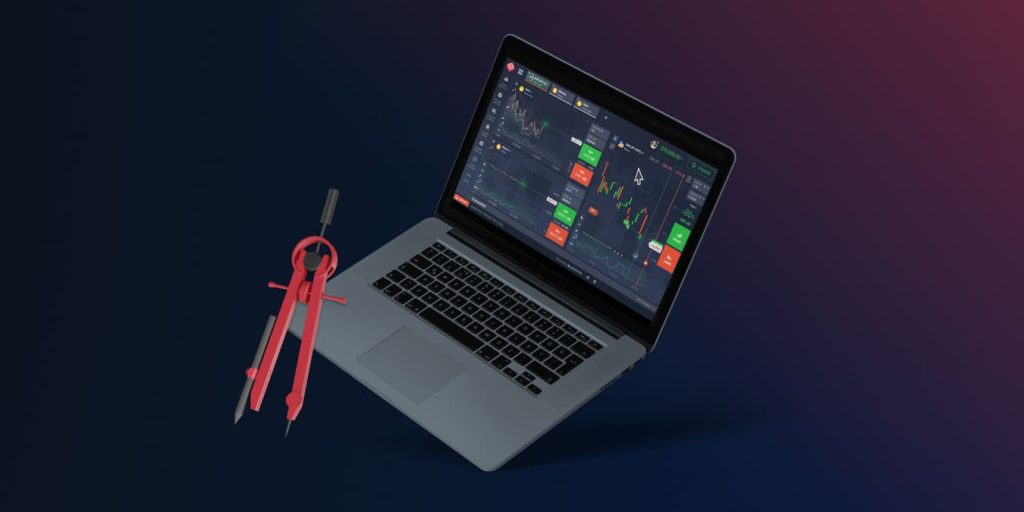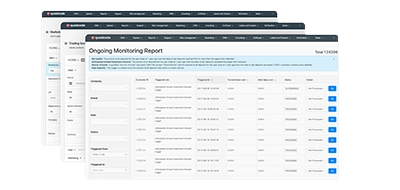Back
Contents
Понимание торговли ценными бумагами: как это работает и почему это важно


Demetris Makrides
Senior Business Development Manager

Iva Kalatozishvili
Business Development Manager
Имитация торговой деятельности без реальных денег известна как «бумажная торговля» (или «бумажный трейдинг»), которая позволяет инвесторам тестировать идеи и стратегии, а также получать знания о финансовых рынках без какого-либо финансового риска. С самого начала важно понимать, что «бумажный трейдинг» — это безрисковая среда, где транзакции совершаются на виртуальной платформе, отражающей реальные рыночные условия, но без вложения реальных средств. Этот подход бесценен как для новичков, так и для опытных трейдеров, стремящихся отточить свои навыки, разработать новые стратегии или изучить другие рынки.
Почему это называется «торговля бумагами»?
Название «бумажная торговля» происходит от традиционного метода, при котором потенциальные трейдеры записывали свои гипотетические ордера на покупку и продажу на бумаге. Люди записывали свои воображаемые сделки и наблюдали за их динамикой, чтобы понять, как их решения повлияли бы на реальный рынок до появления компьютерных торговых платформ. Термин «бумажная» торговля происходит от способности трейдеров интеллектуально участвовать в рыночных процессах, не подвергаясь реальному финансовому риску. В этих моделируемых сделках бумага служила своего рода бухгалтерской книгой, позволяя трейдерам анализировать результаты и корректировать свои планы.
Разница между торговлей на бирже и бумажной торговлей
Хотя и реальная, и учебная торговля предполагают принятие инвестиционных решений на основе маркетинговых исследований, главное различие заключается в использовании реальных средств. В реальной торговле инвесторы используют реальные деньги для покупки и продажи финансовых активов; результаты немедленно меняют их финансовое положение, приводя к реальным прибылям или убыткам. В свою очередь, учебная торговля моделирует сделки, используя воображаемые деньги. Прибыль или убытки являются гипотетическими и не влияют на реальный доход трейдера. Это различие важно, поскольку реальная торговля включает в себя психологические элементы, такие как страх, жадность и стресс, связанный с финансовым риском, которые могут быть не полностью ощутимы в учебной торговле; эмоциональные ставки варьируются. Поэтому, хотя учебная торговля является отличным инструментом для обучения и построения стратегий, она не может полностью подготовить трейдеров к эмоциональным требованиям реального участия в рынке.
Как работает торговля ценными бумагами?
Обычно торговля на демо-счете осуществляется через системы симуляции, предлагаемые финансовыми сайтами или брокерскими компаниями. Обычно пользователи открывают демо-счет, имея заранее определенный виртуальный капитал. Доступ к рыночным данным в режиме реального времени или с задержкой позволяет отслеживать изменения рынка и принимать обоснованные решения. Как и на реальном счете, трейдеры могут совершать виртуальные сделки, выбирая ценные бумаги, объемы и типы ордеров. Отслеживая все транзакции, платформа обновляет виртуальный портфель, отображая убытки и прибыли в зависимости от изменений на рынке. Инструменты технического анализа, инструменты построения графиков и доступ к нескольким классам активов, которые могут предоставляться продвинутыми платформами, могут повысить реалистичность и учебную ценность симуляции. Благодаря тщательному воспроизведению торгового опыта демо-счет позволяет пользователям оттачивать исполнение ордеров, управление портфелем и реализацию стратегии в безрисковой, контролируемой среде.
Есть ли риск в торговле бумажными ценными бумагами?
Хотя торговля на бумаге не предполагает использования реальных денег, она снижает финансовый риск; она не полностью свободна от других видов рисков. Возможный эмоциональный разрыв вызывает серьёзные проблемы. Торговля виртуальными деньгами не могла вызвать тех же психологических реакций, что и торговля реальными деньгами, что привело бы к излишней самоуверенности или игнорированию разумных правил управления рисками. Трейдеры могут идти на риски, которые они обычно не рассматривали бы, если бы на кону были реальные деньги, например, чрезмерное кредитное плечо или игнорирование стоп-лосс ордеров. Более того, определённые рыночные условия, такие как проскальзывание , проблемы с ликвидностью или влияние крупных ордеров — могут быть неточно воспроизведены в симулированной среде, что приводит к нереалистично завышенным ожиданиям до начала реальной торговли. Таким образом, даже при отсутствии финансового риска сохраняется вероятность приобретения неэффективных торговых практик или ошибочных представлений о динамике рынка. Чтобы снизить эти риски, трейдерам следует подходить к демо-торговле с той же дисциплиной и серьёзностью, что и к реальной торговле.
You may also like

Является ли торговля ценными бумагами хорошей практикой?
Общепризнанно, что торговля на демо-счете приносит пользу как новичкам, так и опытным трейдерам. Для начинающих трейдеров она даёт возможность ознакомиться с механизмами торговых платформ и изучить принципы работы рынков, не подвергаясь риску реальных денег. Она позволяет людям обрести уверенность, развить торговые техники и понять поведение рынка. Для опытных трейдеров демо-счет — это своего рода «песочница», где они могут тестировать новые идеи или адаптироваться к текущим тенденциям в условиях меняющегося рынка. Она помогает им совершенствовать свои методы и вносить коррективы перед применением их в реальных условиях. Благодаря использованию стратегии управления рисками Такие навыки, как контроль размера позиции и стоп-лосс, могут помочь трейдерам выработать привычки, критически важные для успеха в реальной торговле. Ведение торгового дневника и следование принципам своей стратегии помогут трейдерам вести демо-торговлю с той же самоотдачей и дисциплиной, что и в реальной торговле, тем самым максимально используя преимущества.
Дополнительные преимущества торговли бумагами
Помимо основных преимуществ изучения фундаментальных торговых приемов и создания начальных стратегий, торговля на бумаге имеет множество других преимуществ, которые могут значительно повысить компетентность трейдера и его готовность к реальным рыночным ситуациям.
Одним из главных преимуществ является доступ к широкому спектру рынков и финансовых инструментов. Акции, облигации, валюта, товары И даже криптовалюты входят в число многих типов активов, которые обычно предлагают платформы для торговли на бумаге. Это разнообразие позволяет трейдерам исследовать и понимать особенности различных рынков, не подвергая себя реальному риску, связанному с денежными средствами. Например, валютный рынок работает круглосуточно и подвержен влиянию мировых экономических событий; на сырьевые товары могут влиять сезонные колебания и геополитическая напряженность. Экспериментируя с различными инструментами, трейдеры могут расширить свою базу знаний, определить, какие рынки соответствуют их стилю торговли, и скорректировать свою тактику в соответствии с этим.
Возможность детально ознакомиться со многими функциями торговой платформы — ещё одно важное преимущество. Расширенные возможности построения графиков, технические индикаторы, настраиваемые списки наблюдения и различные типы ордеров, например, лимитные ордера, стоп-лоссы и трейлинг-стопы, — лишь некоторые из инструментов и функций, предлагаемых современными торговыми платформами. Торговля на демо-счете позволяет пользователям досконально изучить эти возможности, попрактиковаться в совершении сделок и изучить принципы работы различных типов ордеров, не беспокоясь о дорогостоящих ошибках. Поскольку трейдеры уже уверенно работают с инструментами платформы, эти практические знания повышают эффективность и уверенность при переходе к реальной торговле.
Ключевым компонентом демо-трейдинга также является регулярный анализ смоделированных торговых результатов. Тщательно записывая и анализируя свои сделки, трейдеры могут выявлять тенденции в процессе принятия решений, выделять сильные стороны для развития и отмечать области, требующие доработки. Этот постоянный цикл обратной связи позволяет трейдерам оттачивать свои стратегии и способствует личностному росту. Трейдер может обнаружить, например, предрасположенность к быстрому выходу из прибыльных позиций или слишком долгому удержанию убыточных сделок. Понимание этих особенностей поведения помогает корректировать свою стратегию, в том числе определять более разумные уровни стоп-лосса и тейк-профита.
Торговля на бумаге также является эффективным методом тестирования методов на основе прошлых рыночных условий. Многие системы позволяют пользователям воспроизводить транзакции на основе предыдущих рыночных данных, что позволяет понять, как определённые стратегии могли бы себя вести в различных рыночных циклах — на бычьих и медвежьих рынках или в периоды экстремальной волатильности. Перед внедрением стратегии на реальных рынках трейдеры могут оценить её надёжность и устойчивость с помощью такого ретроспективного анализа. Знание прошлых показателей торгового плана помогает обрести уверенность и выявить возможные изменения, необходимые для максимизации результатов.
You may also like

Торговля на бумаге также позволяет трейдерам опробовать множество торговых техник и таймфреймов. Будь то внутридневная торговля, свинг-трейдинг или долгосрочное инвестирование, люди могут попробовать несколько стратегий, чтобы найти ту, которая соответствует их целям, готовности к риску и образу жизни. Создание индивидуальной торговой стратегии, устойчивой и эффективной в долгосрочной перспективе, зависит от такого экспериментирования.
Кроме того, торговля на демо-счете развивает дисциплину и терпение — качества, необходимые для успешной торговли. Реального финансового давления нет, поэтому трейдеры могут сосредоточиться на следовании своим торговым стратегиям и рекомендациям, не поддаваясь эмоциональным соблазнам, которые может создать торговля на реальные деньги. Трейдеры с большей вероятностью перенесут дисциплину в реальную торговую деятельность, закрепляя её в виртуальной среде.
Более того, торговля на бумаге может способствовать созданию возможностей для налаживания связей и обучения. Многие системы содержат элементы сообщества, где трейдеры могут обмениваться идеями, обсуждать тактику и вместе развиваться. Взаимодействие с сообществом единомышленников может стать источником вдохновения, советов и мотивации.
Ограничения торговли бумажными ценными бумагами
Несмотря на то, что демо-торговля является отличным инструментом обучения, она имеет ряд естественных недостатков, которые трейдеры вынуждены признать. В частности, в отношении проскальзывания и ликвидности, одним из основных ограничений является невозможность полностью воспроизвести реальные рыночные условия. Проскальзывание, особенно на динамичных или менее ликвидных рынках, приводит к тому, что цена исполнения ордера в реальной торговле отличается от прогнозируемой. Поскольку демо-торговые системы могут неточно воспроизводить это, трейдеры могут преувеличивать успешность своих методов.
Более того, влияние крупных ордеров обычно не наблюдается в бумажной торговле. На реальных рынках, особенно в местах с низкой ликвидностью, размещение крупных ордеров может повлиять на цену товара. В бумажной торговле это обычно не учитывается, поэтому у трейдеров могут быть нереалистично заниженные или завышенные ожидания относительно того, насколько быстро они смогут войти в позиции или выйти из них по целевой цене.
Реалистичность ожиданий зависит от понимания этих ограничений. Прежде чем переходить к реальной торговле, трейдерам следует внимательно проанализировать результаты своей учебной торговли и внести соответствующие изменения в свою тактику с учётом этих факторов.
Эмоциональные и психологические аспекты
Эмоциональный и психологический опыт, возникающий при торговле на бумаге и на реальных биржах, является одним из наиболее существенных различий. В бумажной торговле отсутствие реального финансового риска приводит к значительному снижению или полному отсутствию таких эмоций, как тревога, страх и жадность. Это может привести к созданию торговой среды, в которой суждения принимаются исключительно на основе рационального анализа, свободного от влияния эмоциональной предвзятости.
Однако, когда речь идёт о реальных деньгах, трейдеры могут реагировать сильно эмоционально, что может повлиять на их процесс принятия решений. Страх потерь может оттолкнуть трейдеров от законных торговых схем или заставить их закрыть позиции на ранней стадии. С другой стороны, жадность может привести к чрезмерной торговле или слишком длительному удержанию успешных позиций в надежде на дальнейшую прибыль, что может привести к убыткам.
Стресс и давление, связанные с реальной торговлей, также могут влиять на способность трейдера придерживаться своей торговой стратегии. Эмоциональная дисциплина становится важным фактором для стабильной прибыльности. Трейдеры могут отступать от своей стратегии, реагируя на страх во время резких движений рынка или проявляя излишнюю самоуверенность после серии удачных сделок.
Трейдерам следует развивать правильное отношение и эмоциональную устойчивость, если они хотят преодолеть этот разрыв. Эффективного управления эмоциями можно достичь, используя техники осознанности, ведя торговый дневник для отслеживания эмоциональных реакций и применяя строгие правила контроля рисков. Реальная торговля помогает трейдерам лучше справляться с эмоциональными проблемами, поскольку признаёт их неизбежность в работе, как на бумаге, так и на реальных рынках.
Заключение
Торговля на бумаге предлагает безрисковую среду для обучения, практики и совершенствования торговых навыков, поэтому любой, кто интересуется финансовыми рынками, получит от неё большую выгоду. Используя симуляции реального рынка, трейдеры могут разрабатывать тактики, обретать уверенность и понимать динамику рынка, не опасаясь потерь. Хотя дисциплинированный и серьёзный подход к торговле на бумаге может значительно повысить уровень подготовки к активному участию в рынке, он не может полностью воспроизвести эмоциональный опыт торговли на реальных деньгах.
FAQ
Поскольку бумажная торговля включает в себя имитацию транзакций с использованием виртуальных средств, вы не можете заработать на ней реальные деньги; любые прибыли или убытки являются гипотетическими и не переходят в реальную финансовую выгоду.
Действительно, торговля на бумаге является законной и в целом одобрена как разумный способ для людей проверить свои методы и попрактиковаться в торговле без реальных денег.
Начинать с торговли на бумаге разумно для новичков, поскольку это позволяет изучить торговые приемы, создать стратегии и получить опыт, не рискуя реальными средствами.
Поскольку многие брокерские компании и финансовые сайты предоставляют клиентам бесплатные симуляторы торговых счетов для практики без риска реальных средств, демо-торговля часто не требует оплаты. Однако, конечно, некоторые платформы могут взимать плату за подписку или дополнительные услуги, поэтому важно уточнить у поставщика услуг, связаны ли с этим какие-либо расходы.
Обновлено:
19 декабря 2024 г.





